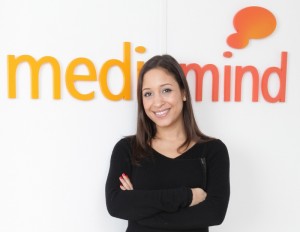Nerissa MacDonald, Director of Trading EMEA for MediaMind, Discusses 'Programmatic Premium' & the Move Towards Cross-channel Integration
by Romany Reagan on 12th Sep 2012 in News


A major part of ATS London is around the growing theme of ‘programmatic premium’, which MediaMind are speaking to, but how can programmatic coexist with premium?
Many companies in the programmatic space today are limited with the capabilities of their solutions, which is preventing brands from jumping in. Either they are dabbling in private exchanges and calling it premium, or utilising verification tools after the fact to ‘finger point’ when quality isn’t being achieved. In addition, post-verification alone is no longer acceptable and advertisers are looking for more preemptive measures to verify RTB buys, often through their ad server.
A recent visit to a large FMCG client of ours highlighted that big brands are really keen to get involved, but they want to get their hands on the technology themselves and all the necessary education to know how to use it.
Once the programmatic part is fine-tuned, premium can be obtained. Buyers on the exchanges want good content and good reach. But, advertisers don't want a high CPM. If you can prove the value proposition advertisers won't mind paying more for quality.
What does MediaMind have to offer in this space beyond rich media capabilities?
MediaMind, the online division of DG, has evolved far past that of a mere rich media provider into a full online technology platform. Recent acquisitions and partnership agreements with Peer 39, Encore Metrics, Adagoo and Nielsen demonstrate that we are providing an end-to-end stack of core capabilities from planning and buying media, to delivering advertising and measuring and analysing campaign performance that is suitable for advertisers, agencies and publishers alike.
Specifically for trading, MediaMind has developed a set of trading desk capabilities around our managed service offering. The data powerplay we now have in place, with a leading ad server platform together with Peer 39 data, features heavily in our product offering.
Lets discuss the DG/MediaMind integration – how and what can brands benefit from in terms of ‘cross-channel’?
As more and more people are viewing video content online, the line between TV and online is beginning to blur. comScore's statistics for online video viewing and ad exposure in Europe reveals the biggest growth in video ad consumption is in the UK. Enabling agencies to plan, serve and analyse video assets with one, independent vendor for both TV and online simplifies the entire process of campaign management. It reduces inefficiencies and enables campaign analysis all in one place.
There has been recent speculation around MediaMind being detached from the DG business – would this impact upon the ability to offer streamlined cross-channel integration?
I do not have anything to add to the statements previously issued about the strategic alternatives process that our board announced. The company as a whole will continue to aggressively pursue and deliver the first truly cross-platform advertising solution.
What do you think brands want and need that the programmatic channel can solve?
To put it succinctly, brands seek to maximise ROI. Programmatic buying brings the highest level of efficiency to any media buy – instead of grouping impressions together, programmatic buying values individual impressions based on data, and the agency is then able to carve out the relevant audience. In addition, the programmatic channel also brings a more granular level of brand safety since advertisers are able to protect their brand down to the impression-level based on page content.
We recently featured MediaMind in a piece on ‘the stack’. What is a stack to MediaMind and what does it represent?
By developing an independent and open platform – an ad technology stack - MediaMind services all components in the advertising display chain incorporating the key stages of ad planning, delivery, optimisation and analysis. It’s about continuously adding value for our customers and helping them to buy and optimise media more effectively.
How does MediaMind compete with Google on this front? Who else do you see as (healthy) competitors?
Google is aiming to connect all of their tools so that it will be collecting data from numerous channels in a single cookie – think search + display data in a single ‘Doubleclick cookie’ that can easily be leveraged for audience buying. This is an attractive proposition for buyers. The flip side of this, which is a cause for concern, is that Google also owns this data in their data management platform and buyers are uncomfortable with this scenario.
MediaMind’s positioning as an independent ad tech stack enables buyers to feel more comfortable managing their own data in a neutral platform capable of working with every and any publisher, DSP and search provider, including emerging channels such as social and mobile. In addition, our focus on the convergence of TV and digital differentiates us greatly from Google, which does not currently operate in that area.
Two of our previous competitors – Unicast and Eyewonder - have now become our colleagues united under the DG umbrella. The collaboration between MediaMind, Unicast and EyeWonder has strengthened our publisher focus and our rich media and video capabilities.
Does MediaMind need to move off of Appnexus in terms of RTB capabilities? What is the current state of play?
We utilise various technologies in the biddable media space, of which Appnexus is a valued partner. Agencies have multiple supplier partnerships and we provide them the opportunity to choose and pick which partners they utilise through our integrated and open platform.
DataDisplayDMPProgrammaticTechnologyTrading Desk







Follow ExchangeWire